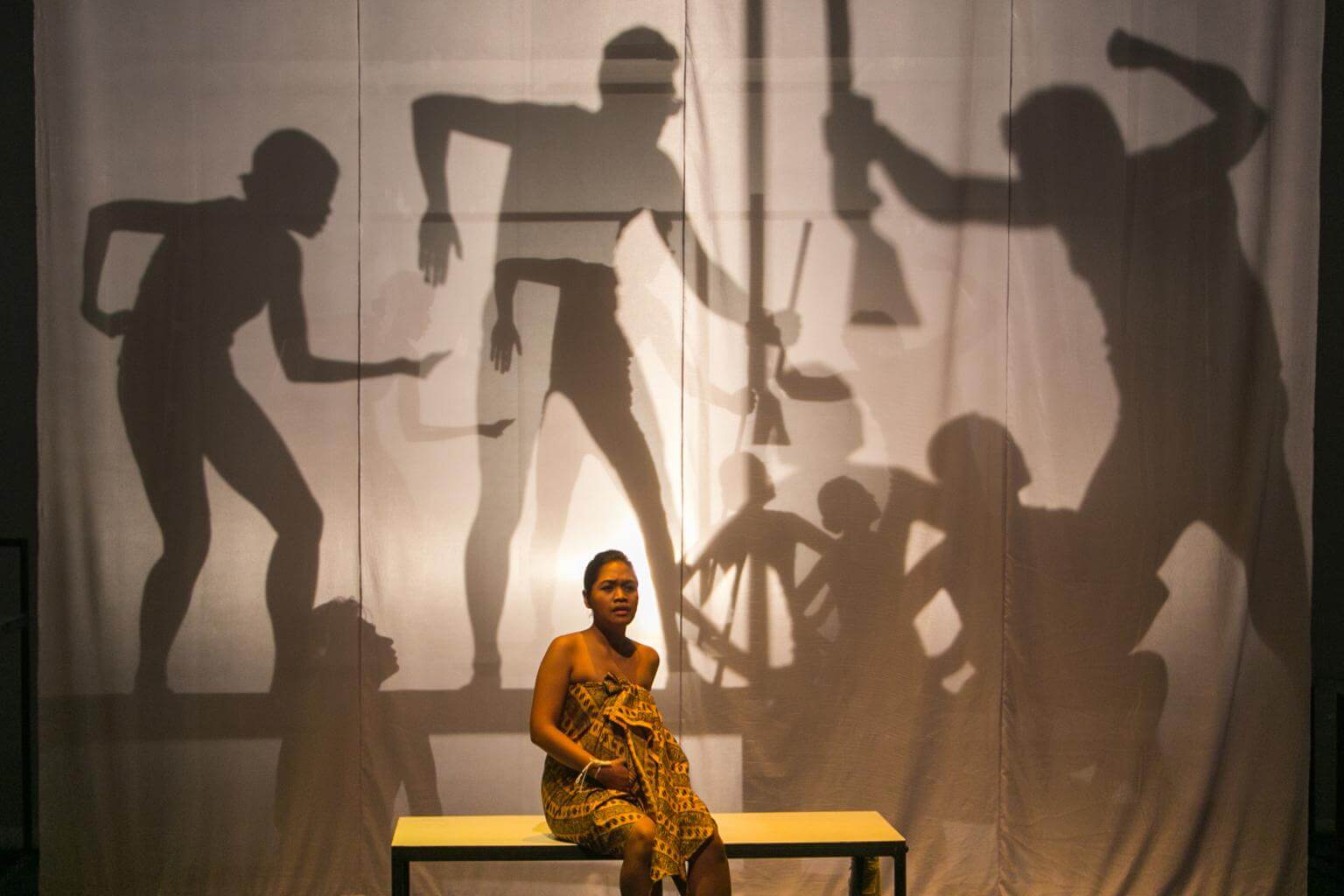Toy Factory Productions' Here And Beyond showcases 12 stories of Singapore
Sign up now: Get ST's newsletters delivered to your inbox

Here And Beyond is the first major work from Toy Factory Productions directed by its associate artistic director Stanley Seah, and daunting in scope for any theatre-maker.
PHOTO: TOY FACTORY PRODUCTIONS
Follow topic:
Review/Theatre
Here And Beyond
Toy Factory Productions
School of the Arts Drama Theatre/ July 28
Performers weave patterns of thread along the set of Here And Beyond, sometimes passing a small loop or a long line from one actor to another.
Thread successfully forms visual links between the otherwise unrelated plays in this theatrical anthology, adapted from a collection of 12 short stories that serves as an O-level text in Singapore schools.
Here And Beyond is the first major work from Toy Factory Productions directed by its associate artistic director Stanley Seah, and daunting in scope for any theatre-maker.
The stories are unrelated. So should one acknowledge the gaps or try to bridge them?
Reading the anthology Here And Beyond: 12 Stories published by Ethos Books, need not be a one-session experience. The reader - even if studying the book - can dip in and out of stories, put the book away for a time and return once interest is stoked again.
The sheer length of the theatrical adaptation is exhausting, ironically because each play has a different tone and style. One needs more space between the works to process, say, the odd beauty of the actors moving like wayang kulit puppets in S. Rajaratnam's The Tiger, or the tense domestic drama of Wena Poon's The Shooting Ranch.
It is a relief when the first-half curtain falls on Claire Tham's The Judge, dramatically lit by Petrina Dawn Tan, who also designed the set.
The cast is versatile and competent, including Tan Rui Shan, Irfan Kasban, Jolene Wong, Abby Lai, Rusydina Afiqah, Timothy Nga and Darren Guo. Predictably, Irfan and Nga carry the show whenever they appear but - unpredictably - so does relative newbie Rusydina. She shines, whether playing a rural woman, a young girl championing justice, or a fearful domestic worker.
Some of the stories are better adapted for the stage, such as the near-wordless physical comedy chosen for Felix Cheong's True Singapore Ghost Story. After the initial clamour of stock-trading, expressions and movement are better than dialogue to show the character's sudden riches and equally sudden fall from grace.
In contrast, the post-interval presentation of Stephanie Ye's City In C Minor is a monodrama performed by Tan. This format is too easily tuned out without a prop - perhaps the protagonist's cello? - or some twists in the delivery to emphasise the musicality of the source text.
The stories in the anthology were written in different decades and sometimes their age shows, such as in the "bro code" humour of Simon Tay's My Cousin Tim (which appealed to most of the audience). Some are timeless, such as Goh Sin Tub's Shoes Of My Sensei, which brings the show to a fitting close.
His post-World War II story about respect and love between so-called enemies is brought movingly to life by Nga and Irfan as teacher and student. As the characters separate physically, the cast gathers long threads across the theatre into one giant structure.
It is a good way to end a production that celebrates the differences as well as common themes in this anthology of stories. It symbolises, perhaps, the way stories and shared experiences link people to each other across time and space.

